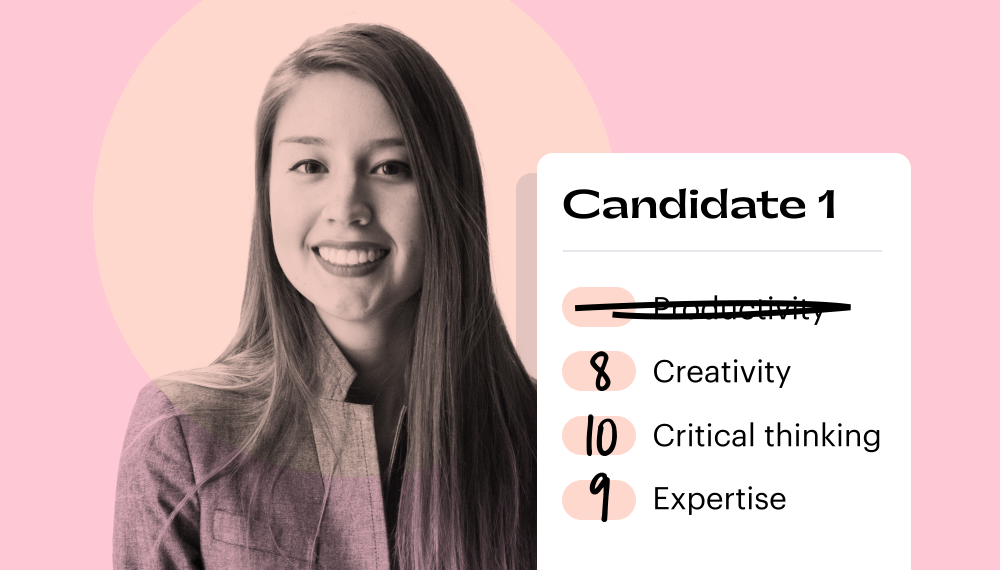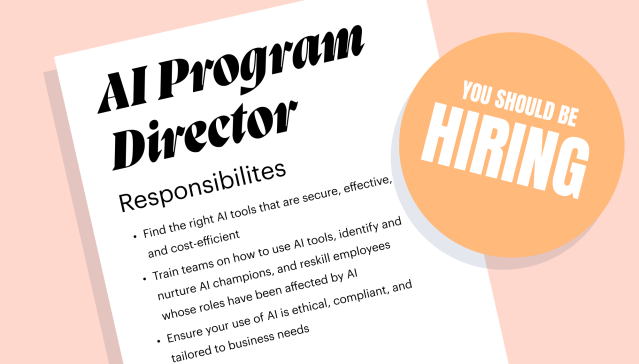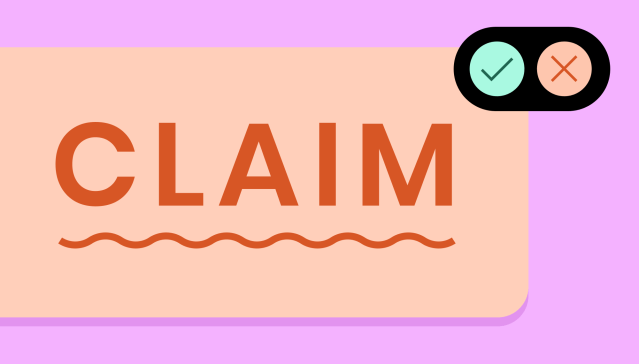AI in the enterprise
– 8 min read
The future of talent: Adapting your hiring practices for an AI workplace

The invention of the typewriter changed everything in the workplace. It made work more systematic and more efficient. It also created an entirely new category of jobs, spurring a wave of demand for skilled stenographers and typists. It also cut the need for taking dictation with pen and ink, but those workers would have benefitted from the massive surge in productivity and hiring that came with the new technology anyway.
AI can change our workforces in very similar ways to the typewriter. The panic about AI coming to take jobs away has dominated the conversation, but the adoption of AI technology has as much (if not more) potential to create new needs, opportunities, and roles as the typewriter did.
Only 18% of organizations in the Deloitte 2023 Global Human Capital Trends survey said their leaders are ready to develop a workplace model that will help them navigate the disruption brought by changing technology. Leaders who have already started developing strategies around the hiring changes that will come with AI will give their organizations a huge advantage.
You’ll need to empower and upskill existing employees. You’ll need to develop a clearer understanding of what attributes to look for in prospective talent in an AI-powered workplace. You’ll need to shift your mindset away from hiring for productivity and instead emphasize creativity, critical thinking, and expertise.
You need to know how AI will change your workforce so you can make the strategic hiring decisions that’ll make sure you reap the full benefits of AI technology.
- Automating menial tasks will give businesses a productivity boost. But fewer entry-level roles mean less chances for on-the-job training and ground-up promotions.
- To attract and cultivate new and the junior talent you’ll need later, consider creating intentional, apprenticeship-style programs.
- AI will increase the need for experienced judgment and subject matter expertise.
- Help employees use AI to expand the reach of their day-to-day work by training them to use AI tools.
- Use equitable upskilling to make your workforce more adaptable.
- Hire an AI program director to guide your adoption of AI technology and make sure your business is prepared to acquire and develop a successful, AI-informed, workforce.
Redefine the “entry-level job’
The increasing use of AI technology at work will have a disproportionate impact on entry-level jobs. These roles involve many of the repetitive or analytic skills that AI technology is best suited to. This includes note-taking, data entry and analysis, background research, drawing up template documents, copywriting, basic coding tasks, and customer assistance roles.
Automating menial tasks will give your businesses a significant productivity boost, but there will be a trade-off. Entry-level roles traditionally give less experienced workers a place to learn the industry, grow their skills, and build business acumen for your company. With fewer entry-level roles available, it will be more challenging for you to use on-the-job training and ground-up promotions to encourage upward mobility and bring new talent into your organization.
You’ll need to develop intentional, apprenticeship-style programs to build the pool of junior talent you’ll need later. The apprenticeship process ensures that entry-level employees gain knowledge and develop the skills of thinking and problem solving in collaboration with professionals in the field. Internships and entry-level roles will need to move closer to this traditional model, focusing more attention on training workers to strategically fill needs that arise as technology develops.
Entry-level employees can even begin learning your business through custom in-house AI models. Tools like Writer can be specifically trained on your business’s needs and standards so you can teach new workers to the exact specifications of your business.
A company that pulled this off well is iManage. They scaled their content production and their team significantly by using AI to empower authors to write in their business’s voice without having to constantly refer to materials or copyeditors.

Discover how iManage used AI to quickly ramp up new writers on their style guides and content guidelines: read the story.
Using AI to develop your new talent makes workers more skilled in guiding and working alongside AI, developing an even more AI-competent workforce.
Recognize the need for stronger subject matter expertise
AI can reduce repetitive work, but it’ll simultaneously increase the need for experienced judgment and subject matter expertise. Businesses are going to have more of a need for discerning employees who can guide and critically evaluate the content AI is producing for them. Those employees will bring unique perspectives and build authentic relationships based on a wealth of human experience and values that AI can’t produce on its own.
What’s often forgotten in the public discussion around AI is that AI is a tool, and tools are only as good as the people using them. As a consumer, you can tell the difference between a mass-produced piece of apparel and a handcrafted piece made by an artisan, even if the fast-fashion factory and the high-end designer are both using a sewing machine rather than hand-stitching. Businesses that hire skilled, experienced operators for their AI tools will produce better results than those who treat them like an assembly line.
Employees will need to judge when to accept or reject AI output and balance any bias AI introduces. Even with tools like Writer that help with fact-checking and reduce instances of “AI hallucinations,” you’ll still need technical and legal experts to review certain types of AI-produced content to guarantee it’s compliant and accurate — especially if you’re in a regulated industry.
What’s important to understand is that AI can’t replace human insight. Your end product will be better when you have skilled people guiding the direction of AI-produced content from the beginning and editors or reviewers who understand the underlying material and can compensate for any of AI’s potential gaps.
Help employees use AI to expand the reach of their day-to-day work
McKinsey’s research found that a full 50% of current work activities could be automated by already existing technology. Helping your workers use AI to offload those activities will enable them to dedicate more energy to tasks that require their expertise and are more business-critical.
It’s not just entry-level workers or AI-specific roles who can benefit from AI tools. Many more experienced professionals are already upskilling with generative AI. According to a Fishbowl study, more than a quarter of professionals are introducing AI to their work, and that number is consistently high from Gen Z to Gen X. You can better keep your high-performing employees by helping them grow in their careers with the help of AI tools.
Businesses should consider hiring an AI program director to direct the rollout of AI training and tools throughout their organization. This person’s role will be to figure out what tools will be best for your business and industry. They can then develop training and structures so everyone can get confident using AI tools.
Use equitable upskilling to make your workforce more adaptable
AI technology will trigger two important results — businesses will have workers whose jobs are significantly changed or eliminated and they’ll also have new needs that emerge that AI can’t be applied to. Equitable upskilling is the solution to both problems.
Instead of letting go of proven workers, businesses can train them to fill new needs and develop a workforce exactly suited to their new goals. Since AI technology is so new, you can even train your workers in specific AI use cases you might not be able to find on the labor market yet.
A great example of equitable upskilling is Ikea’s recent customer service changes. They introduced an AI bot that could handle basic customer service inquiries, but that left thousands of call center workers without roles. At the same time, they discovered customers had a new need for more nuanced advice on their products.
They reskilled their call center workers to provide interior design advice (a role more suited to human touch). Offering design advisement as a paid service had the added benefit of creating a new revenue stream that could help them compete with new DTC furniture businesses.
Antictipating the impact of AI gives businesses long-term opportunities
AI technology isn’t simply impacting one task or one job. It’s fundamentally changing what kinds of work we do and what kinds of roles humans have to play. The businesses that flourish will be the ones that see the opportunities and roll out AI with an eye on their future workforces.
Want to learn more about equipping your employees for an AI-powered future? Check out the following resources:

The generative AI adoption roadmap: A business leader’s guide to responsible employee training

How to support existing employees in the face of AI disruption




